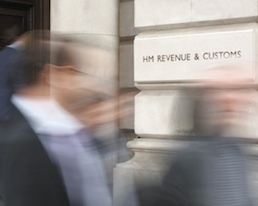
Planners react: IHT receipts reach £6.1bn

Inheritance tax receipts for April 2021 to March 2022 were £6.1bn, a rise of £0.7bn year-on-year, according to the latest figures from HMRC.
Financial Planners said that the rise in receipts is likely to continue, partially driven by increasing house prices.
Rosie Hooper, Chartered Financial Planner at Quilter, said the rise in IHT receipts shows it is acting as a stealth tax for many.
She said: “A key contributor to the increase in IHT receipts is the housing market which increased relentlessly over the same period, in which stamp duty holidays drove the UK to a record high average house price of an eyewatering £360,101, according to Rightmove.
"With thresholds frozen, the increase in IHT revenue is viewed as a stealth tax, as more and more people are dragged into the IHT net following the sale of their homes.”
Julia Rosenbloom, tax partner at Tilney Smith & Williamson, said the Treasury needs every penny it can get and that families need to take action and look carefully at plans for intergenerational wealth transfer before any potential changes to IHT in the next Budget.
She said: “Given that the Office for Budget Responsibility recently forecasted that the Treasury will receive £37bn in IHT payments over the next five years, now is the time for families to take action and look carefully at their tax planning.
“Even before any possible changes to IHT in the next Budget later this year, many people can expect to see increased IHT bills following the Chancellor’s decision to freeze both the nil rate band and residence nil rate band until at least April 2026. With rising property prices, more families are being brought into scope for IHT and this is forcing some to face difficult decisions – such as potentially needing to sell family homes to settle IHT bills.
“By taking professional advice and planning ahead, families may have an opportunity to reduce or eliminate their IHT bill through considering investing tax-efficiently and making gifts to family members.”
Helen Morrissey, senior pensions and retirement analyst at Hargreaves Lansdown, said the increase in IHT receipts was partially driven by the Coronavirus pandemic.
She said: “Some heart-breaking reminders of the pandemic remain. Inheritance tax receipts surged past £6bn in 2021/22 – an indicator of the higher number of wealth transfers that took place. It’s also increasingly evident that the government’s decision to freeze nil rate bands is playing its part as more people get caught in the inheritance tax trap.”
Alex Davies, CEO and founder of Wealth Club, an investment service for HNWs, said it is not just the wealthy that need to take advice around IHT.
He said: “Tax on death is not just for the very wealthy. Rising house prices, especially in the southeast and London, have pushed many homeowners over the IHT threshold, not helped by the fact that both the nil rate band and residence nil rate band have been frozen until at least April 2026.”
Inheritance tax receipts during 2020-21 tax year totalled £5.4bn, a 4% increase from the previous tax year.
In 2020-21 33,000 estates paid IHT, up by a third according to the Office for Budget Responsibility (OBR), with the average payment around £160k.
The latest forecasts by the OBR has IHT receipts reaching £6.5bn by 2023-24.
IHT is paid on around one in every 25 estates across the UK.
